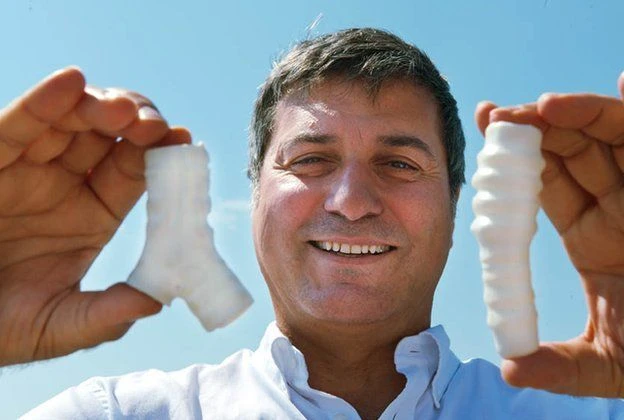
Ingrown toenails can be painful and uncomfortable, but fortunately, there are several home remedies that can help alleviate the symptoms and promote healing.
In this guide, we will explore eight effective home remedies for ingrown toenails and provide insights into how they can provide relief. It’s important to note that while these remedies are generally safe and beneficial for mild cases, severe or recurring ingrown toenails should be evaluated by a healthcare professional for appropriate treatment.
Warm soaks
Soaking your feet in warm water infused with essential oils can be a simple yet effective remedy for ingrown toenails. Saltwater soaks can help reduce inflammation and promote healing.
Dissolve one to two tablespoons of salt in warm water and soak your feet for 15-20 minutes. Repeat this remedy twice a day to soothe the ingrown toenail. The warm water helps reduce pain, swelling, and tenderness associated with ingrown toenails.
Epsom salt soaks
Epsom salt has anti-inflammatory properties and can aid in healing ingrown toenails. Dissolve a handful of Epsom salt in warm water and soak your feet for 15-20 minutes daily. This remedy helps reduce inflammation and promotes overall relief.
Proper toenail trimming
Regular improper toenail trimming is a common cause of ingrown toenails. Trim your toenails straight across, avoiding rounded or pointed edges. Be sure not to cut them too short, as this can encourage ingrown toenails. Regularly practicing proper toenail trimming techniques can prevent future occurrences.
Lift the nail
Gently lifting the ingrown edge of the toenail can provide relief by separating it from the surrounding skin. Use a clean cotton ball or dental floss to carefully lift the nail. This technique helps alleviate pressure and discomfort.
Apply antibiotic or topical ointment
After soaking your feet, apply a topical antibiotic ointment to the affected area. This helps prevent infection, particularly if the ingrown toenail has caused a break in the skin. Consult your pharmacist or healthcare provider for suitable ointment options.
Use a toe protector
Toe protectors, such as foam or silicone sleeves, can cushion the affected toe and minimize further irritation or injury. These protectors are available in pharmacies and can provide added comfort during the healing process.
Wear proper footwear
Choosing footwear that allows ample room for your toes is essential in preventing ingrown toenails. Avoid tight-fitting or narrow shoes and opt for those with a wide toe box, allowing your toes to move freely. This reduces pressure on the toenails and promotes healing.
There are several natural home remedies available in the kitchen that can help soothe and alleviate the discomfort of an ingrown toenail. Here are a few options:
Apple cider vinegar: Apple cider vinegar has antimicrobial properties that can help prevent infection and reduce inflammation. Mix equal parts of apple cider vinegar and warm water in a basin. Soak your feet in this solution for 15-20 minutes daily to soothe the ingrown toenail.
Tea tree oil: Tea tree oil is known for its antiseptic and anti-inflammatory properties. Dilute a few drops of tea tree oil in a carrier oil, such as coconut oil or olive oil. Apply the mixture directly to the affected area using a cotton ball. Repeat this process a few times a day to help relieve pain and reduce swelling.
Turmeric paste: Since turmeric contains curcumin, a compound with anti-inflammatory and antibacterial properties. Make a paste by mixing turmeric powder with a small amount of water. Apply the paste to the ingrown toenail and leave it on for 30 minutes before rinsing off. Repeat this remedy twice a day for best results.
Garlic cloves: Garlic has natural antimicrobial properties that can help prevent infection. Crush a few garlic cloves to create a paste and apply it directly to the affected area. Cover it with a clean bandage and leave it on for a couple of hours. Rinse thoroughly and repeat daily until the symptoms improve.
Baking soda: This staple ingredient for baking on most pantries can help reduce inflammation and alleviate pain associated with ingrown toenails. Mix one tablespoon of baking soda with warm water to create a paste. Apply the paste to the affected area and leave it on for 20 minutes before rinsing off. Repeat this remedy daily for relief.
Onion: Onion has antimicrobial properties and can provide relief from pain and inflammation. Cut a small piece of onion and place it over the ingrown toenail. Secure it with a bandage and leave it on overnight. Rinse your foot in the morning. Repeat this remedy daily until the symptoms subside.
Seek professional help for severe cases
If your ingrown toenail becomes severely infected, causes intense pain, or fails to improve with home remedies, it is crucial to seek medical attention. A healthcare professional can provide appropriate treatment, such as oral antibiotics or a minor surgical procedure, to address the issue effectively.
Ingrown toenails can be effectively managed with home remedies in mild cases. However, it’s important to prioritize proper nail care, wear comfortable footwear, and seek professional help for severe or recurring ingrown toenails.
By following these home remedies and seeking medical assistance when necessary, you can alleviate discomfort, promote healing, and prevent future occurrences of ingrown toenails.






